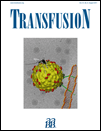Detection of autologous blood doping with adaptively evaluated biomarkers of doping: a longitudinal blinded study
Abstract
BACKGROUND: Since no direct detection method for autologous blood transfusions exists, the most promising attempt is the Athlete Biological Passport (ABP) and its adaptive model that enables a longitudinal monitoring of hematologic measures to identify patterns of blood manipulations. The purpose therefore was to evaluate the performance of this adaptive model for the detection of autologous blood transfusions in a longitudinal blinded setting.
STUDY DESIGN AND METHODS: Twenty-one subjects were divided into a doped group (multiple transfusions of 1-2 units of red blood cells, n = 11) and a control group (n = 10). The time course of a cycling season (42 weeks) was simulated including three major competitions (Classics, Grand Tour, World Championships). Up to 10 venous blood samples were ordered per subject by a blinded investigator mimicking the intelligent approach in obtaining hematologic data for the adaptive model (hemoglobin [Hb] concentration, reticulocyte percentage, OFF-score).
RESULTS: Retrospective analysis allowed identification of four (probability >99%) or three (probability >99.9%) abnormal samples for Hb and eight (probability >99%) or five (probability >99.9%) abnormal samples for OFF-hr in doped subjects. Four doped subjects (36%) presented an abnormal OFF-hr sequence and three doped subjects (27%) an abnormal Hb sequence; there were no false-positive sequence results. The best possible sensitivity was 82% when a combination of all tests was used.
CONCLUSIONS: This investigation provides evidence that the adaptive model allows detection of autologous blood transfusions with a good sensitivity. An intelligent testing approach and the adherence to World Anti-Doping Agency's ABP operating guidelines are nevertheless determinant in the success.




